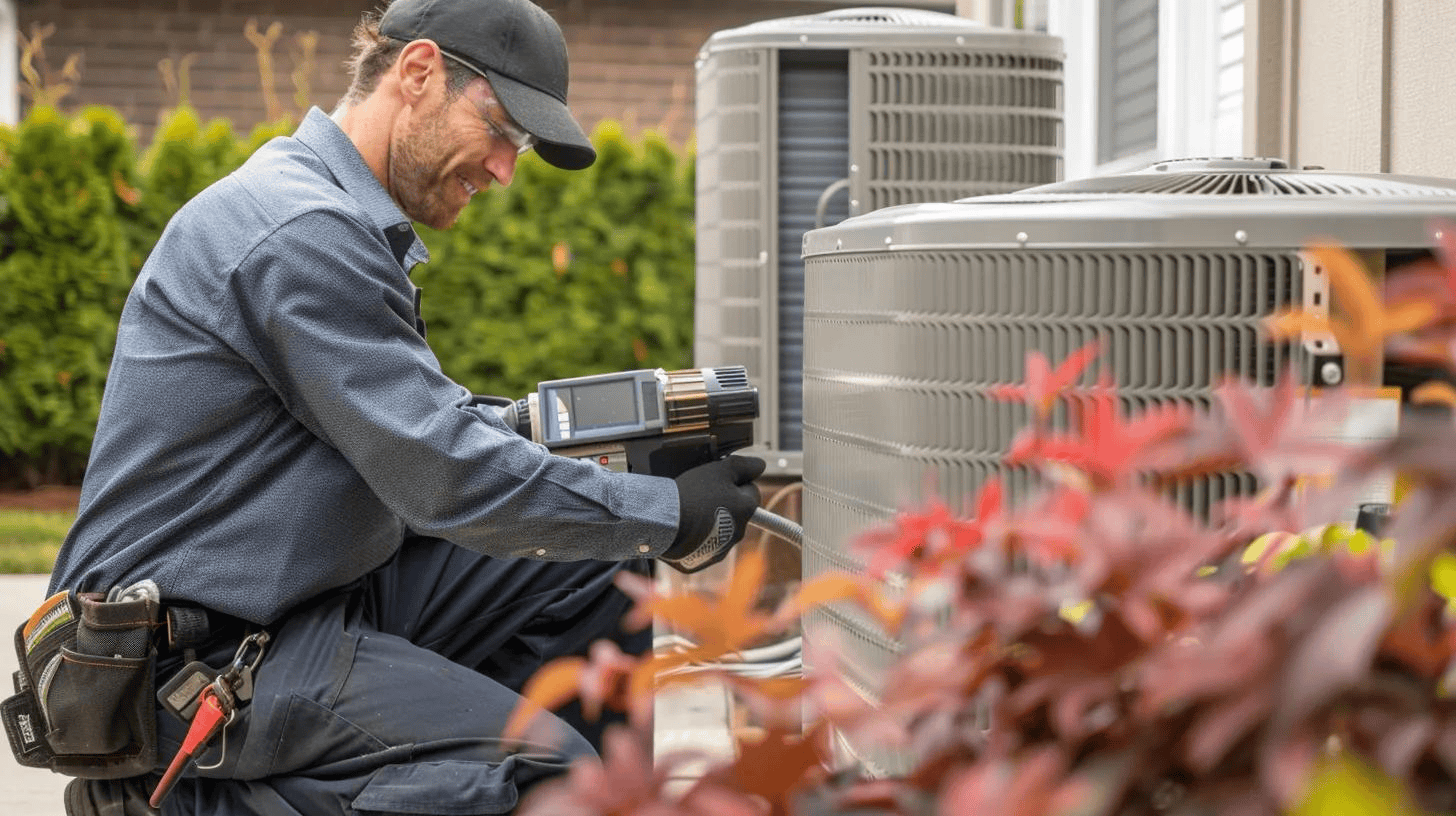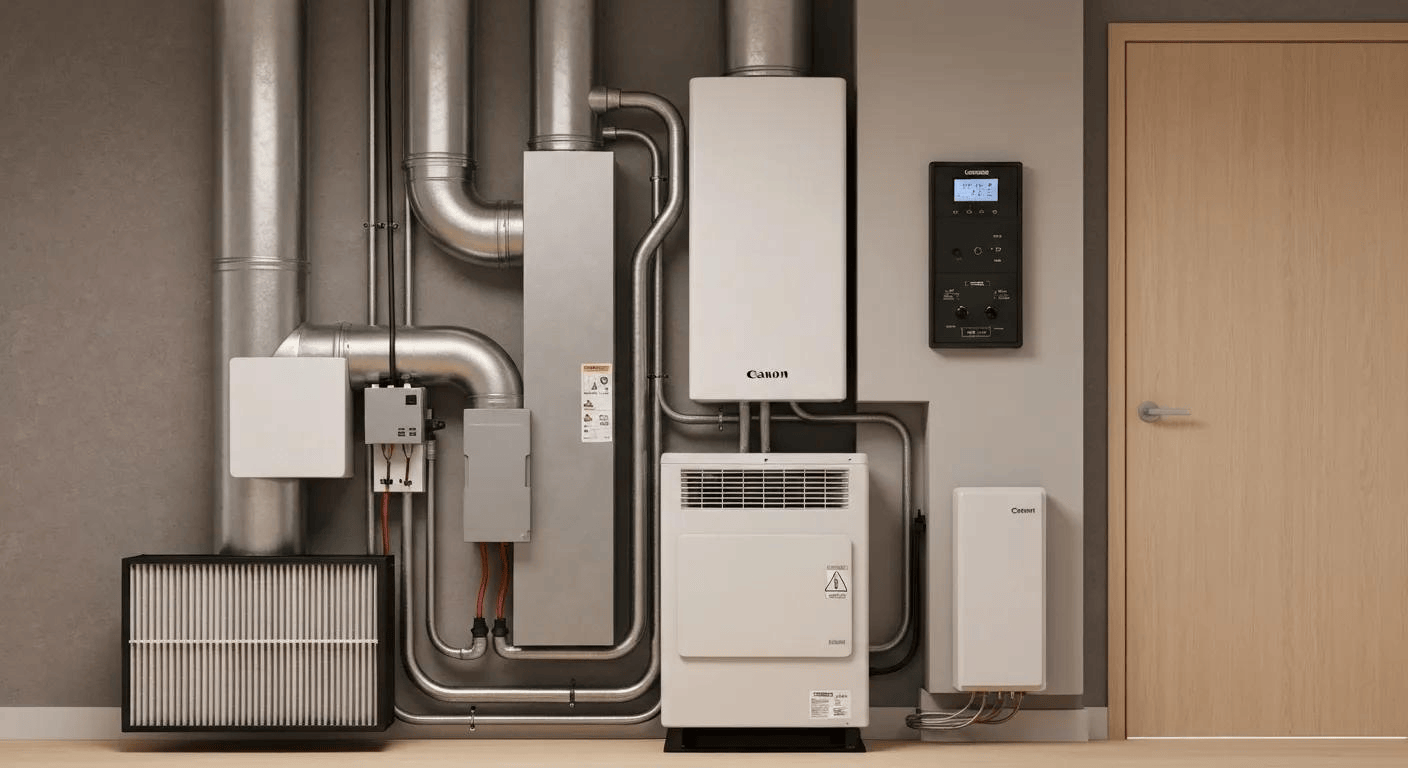Heat pumps are built to handle both heating and cooling, which makes them a popular choice for homeowners in Roanoke. But when temperatures hit their highest or lowest points, many people start to notice problems with how well their system works. Instead of stable airflow or steady room temperatures, the unit might run longer, struggle to keep up, or even shut off. These issues are not just inconvenient—they are signs that your system is under pressure and may need attention.
When summer temperatures soar or winter brings freezing nights, your heat pump has to work harder than usual. That extra workload can push the system past its usual limits. Whether your heat pump is not cooling your home properly in August or has a hard time keeping things warm in the middle of January, there are real reasons behind the struggle. Recognizing those issues early can keep your system from breaking down during the times you need it most.
Understanding Why Heat Pumps Struggle in Extreme Temperatures
Heat pumps move heat instead of creating it. In warmer months, they remove heat from your home and push it outside. In colder months, the process is reversed—it draws heat from outdoor air and brings it inside. This works well when the outdoor temperature stays within a certain range. But when extreme heat or cold hits Roanoke, that balance becomes harder to maintain.
During summer, when outdoor temperatures stay high for long periods, the system has to run longer to keep your home cool. Once the heat pump works past its designed capacity, cooling becomes less effective. The compressor and other components are more likely to overheat or wear down faster. On the flip side, when freezing weather hits, it is harder for the system to find enough heat in the outside air to bring inside. The colder it gets, the less heat there is to extract, and the system begins losing efficiency.
At both ends of the spectrum, your heat pump needs more energy and longer run times to try and keep up. That type of operation is not sustainable long-term and can shorten the life of important parts. If you are noticing that your home does not stay comfortable—especially right after your heat pump has been running for a while—it may be feeling the effects of Roanoke’s temperature swings.
Common Issues Heat Pumps Experience in Roanoke During Extremes
When a heat pump is under stress, problems tend to show up faster. Some warning signs are easy to miss at first, but over time they can lead to system failure or costly repairs. Here are some of the most common problems that show up in Roanoke during peak weather:
- Low heating or cooling output
Even when running non-stop, the system may have a hard time moving enough warm or cool air into the rooms. This could be due to refrigerant problems, dirty coils, or simply the system operating beyond its efficiency range.
- Short cycling
If the heat pump starts up and shuts down repeatedly, it is likely struggling to maintain temperature. This adds wear to the compressor and makes your electric bill climb without improving comfort.
- Frozen outdoor coils during freezing weather
Ice build-up blocks airflow and prevents the unit from working. If the defrost cycle is not functioning properly, it can shut down completely or cause long-term damage.
- Overheating during long summer cool-down cycles
When the unit runs for hours trying to keep your home cool, the compressor may start to overheat and shut off automatically to protect itself. This often leads to warm indoor temperatures and delayed recovery times.
Extreme weather patterns in Roanoke push heat pump systems to their limits. Recognizing these signs early can help prevent damage or breakdowns when you are relying on your system the most. Consistently seeing one or more of these issues may mean your system needs a detailed check before it gets worse.
Preventative Measures For Heat Pump Efficiency
A heat pump that is struggling in Roanoke's temperature extremes often shows early signs before breaking down completely. Taking active steps to maintain efficiency can reduce the chances of bigger issues developing during summer heatwaves or freezing cold spells. Some actions may seem small, but when done consistently, they keep your system running longer and more reliably.
First, routine maintenance should never be skipped. Cleaning the outdoor unit, checking for blockages around the coils, and inspecting the fan blades go a long way in preventing overheating or freezing. Debris like leaves, dirt, and small branches can clog airflow and trap heat or cold around the system. If that buildup is not removed, you are asking the heat pump to work harder for the same result.
Second, airflow inside and outside the home affects every heating and cooling cycle. Make sure furniture is not blocking vents, and vacuum out dust from registers regularly. Outdoors, trim back bushes and keep at least two feet of open space around the entire heat pump unit.
Another issue that impacts performance is insulation. If your home leaks too much air, it puts more strain on the system to keep things comfortable. Poor insulation in attics or crawl spaces, unsealed windows, or drafty doors all make your system work longer than necessary. You are paying for air that escapes before it can do its job.
To keep everything operating smoothly, follow these basic tips:
- Replace air filters every 1–3 months, especially during heavy-use seasons
- Keep supply and return vents throughout the house clean and unobstructed
- Clean off the outdoor unit when leaves or dirt begin to build
- Schedule regular inspections with our technicians before peak seasons
- Set your thermostat to a steady temperature range rather than constant adjustments
- Seal windows, attic areas, and doorframes for better temperature hold
- Clear snow or ice quickly from around the outdoor unit during cold spells
Simple changes like consistent filter replacement can keep air moving freely. Skipping this step forces the heat pump to operate under resistance, which adds wear and heats up the system during cooling cycles. Even in Roanoke homes where newer systems are installed, blocked airflow remains a top cause of calls after long heat or cold stretches.
Cleaner operation, less stress on parts, and smoother run cycles all help extend your equipment's life. Regular checks and adjustments give peace of mind when seasons hit their extremes.
When To Call In Our Professionals
There are times when even a well-maintained heat pump starts to fall behind, especially during periods of extended heat or cold in Roanoke. If you notice signs that go beyond normal wear, it is time to get a professional involved. The longer you wait, the more likely it is that minor problems turn into expensive repairs.
One of the first signs homeowners report is uneven temperature throughout the house. If some rooms feel much warmer or colder than others, your system might not be distributing air properly. This could point to duct issues, low refrigerant, or a problem with the unit’s thermostat calibration.
Other signs include:
- Short cycling for no clear reason
- Unusual sounds like rattling, grinding, or buzzing
- Ice build-up that does not melt even during warmer parts of the day
- Warm air coming out when in cooling mode, or cold air during heating
- Sudden increases in energy bills with no other explanation
A clear example happened to a homeowner in Roanoke who noticed their heat pump turning off within just a few minutes, even when the home was not at the set temperature. After a few days of uncomfortable temperatures and rising energy usage, they brought in our technicians. The problem turned out to be an issue with a defrost control board that caused the system to misread outdoor coil temperature. A fast replacement got the system running reliably again.
Attempting to troubleshoot these more complex problems without the correct tools or know-how can lead to further damage. Our professionals are trained to catch faults early, test safely, and repair with the right replacement parts. They can also recommend improvements based on your home’s layout or current equipment age.
Calling in help at the first sign of trouble stops small issues from snowballing. It also protects your system from getting pushed beyond its limits during Roanoke’s wide weather shifts.
Keeping Your Heat Pump Reliable Year-Round In Roanoke
Roanoke weather pushes your heat pump into constant adjustment. Between long, humid summers and brisk, icy winters, performance drops are expected once conditions shift past what your system was sized for. But when those minor shifts turn into major drops in heating or cooling, it is time to take action before bigger issues set in.
Whether it is keeping up with filter changes, sealing out drafts, or clearing space around your outdoor unit, the most effective way to avoid heat pump problems is regular attention to small details. They add up. From lowering strain to avoiding emergency calls in the middle of the night, consistent care makes a difference.
Some problems, though, run deeper than home maintenance can handle. If you are seeing signs that do not go away after filter changes, or you regularly need to adjust your thermostat without results, there may be system-wide issues that need our attention. A detailed inspection can bring those hidden faults to light before your heat pump quits when you need it most.
Reliable heating and cooling depend on a system that is ready for what Roanoke weather delivers. Staying a step ahead with inspections and repairs keeps performance steady and prevents unexpected breakdowns during peak seasons.
If your heat pump is struggling to keep up during Roanoke’s weather extremes, Woods Family Heating and Air is here to help with timely, expert service. Learn how our reliable heat pump repair in Roanoke can restore comfort and efficiency to your home. For a quick estimate or to book a service visit, please contact us today.








